- Home
- L. Frank Baum
Wonderful Wizard of Oz (Barnes & Noble Classics Series) Page 2
Wonderful Wizard of Oz (Barnes & Noble Classics Series) Read online
Page 2
Unlike the only two competing contemporary versions of pre teen female protagonists, Lewis Carroll’s Alice and J. M. Barrie’s Wendy (both ten-year-old girls), Baum put Dorothy in a book that features none of the potential cognitive difficulties that still tend to drive children (and some adults) away from the texts of Alice in Wonderland and Peter Pan. Though he admired Alice in Wonderland (1865), he also found it “rambling and incoherent,” a judgment echoed by subsequent critics, and apparently refused Carroll’s example of a highly internalized and ironic vision of a child’s world.2 The openings alone reveal the vast differences between these visions of childhood:
Alice was beginning to get very tired of sitting by her sister on the bank, and of having nothing to do: once or twice she had peeped into the book her sister was reading, but it had no pictures or conversations in it, “and what is the use of a book,” thought Alice, “without pictures or conversations?”
So she was considering in her own mind, (as well as she could, for the hot day made her feel very sleepy and stupid,) whether the pleasure of making a daisy-chain would be worth the trouble of getting up and picking the daisies, when suddenly a white rabbit with pink eyes ran close by her.
There really is no “exterior” here because the author is taking advantage of the potential for exploiting a characteristic of children’s narrative, the tendency to drift between literary and social space. It is all happening “in her own mind”—there are at least three such references in the opening paragraph—and in the syntactic environment, where the reader’s attention is shunted like a Ping-Pong ball through bits of interior monologue (“and what is the use of a book,” thought Alice, “without pictures or conversations?”) and gates of parentheses, which suggest a mind that is capable of reflecting on itself, resulting in the severely hypotactic style we associate with high-octane Victorian satire, while the narrative elides interior and exterior and, by the third paragraph, is in Wonderland.
Baum also understood the central dilemma of any writer entering the genre—that children lend their name to the genre and nothing else—and dedicated himself to creating a thoroughly exteriorized vision of a child who finds herself in trouble. In that consists the decisive difference between Dorothy and her nearest British and European counterparts. Alice’s rabbit hole is not only a corridor to Wonderland but a passage into the unconscious; the result is a serially distorted view of a world she is not all that anxious to get back to as well as a mockery of ordered thought and behavior with no self-enunciating moral or logical center. Scholars love Alice in Wonderland because there is so much space for interpretive intervention; but scholarship, and Freud especially, has no place to stand in Oz and very little to say to Dorothy or about her journey. Oz is a lot of things—colorful, dangerous, silly—but no means as obsessively deranged or as “morally unintelligible” as Wonderland.3 The world of The Wonderful Wizard of Oz is optimistic, not sarcastically aloof or, as it so often is in Barrie’s Peter Pan (1904), archly satirical. Wonderland is a psychic, not a physical torment; Neverland is a theme park where the dominant modality is nostalgia. But Oz is a balloon ride away. MGM’s decision to transform Dorothy into a trauma victim and Oz into a mental state blurs the essential difference between these two radically opposed visions of fairy tale and, possibly deliberately, turns Dorothy into an American Alice and a gracefully nuanced American romance into a psychological allegory. Given Hollywood’s obsession with total cinematic disclosure and its prime directive that no fact must ever go unexplained, you get the 1939 film—a work of genius, but not of Baum’s genius.4
So for readers who come to the novel after having grown up with the movie, the biggest shock is to find in the novel none of the film’s comforting, gap-filling backstory. Some of the cinematic revisions, such as the snowstorm that wakes the sleepers in the poppy field and that replaces their rescue by the Queen of the Mice in chapter IX, were cost-efficient alternatives to special effects that might have proven impossible or inadequate to the illusion.5 The change from Silver Shoes to Ruby Slippers in the 1939 movie, as most people know, was dictated by technical considerations (red showed up more vividly on the film stock of the period than silver); and American culture would be poorer without some of its memorable dialogue. But the principal changes are in the overall characterization and in retrospect seem less defensible. In the book Uncle Henry and Auntie Em never really emerge from the background and appear together only in chapter I, Auntie Em appearing alone in the very brief closing chapter. The film, however, shows them as loveable (if two-toned) representatives of a loveable Kansas home. Margaret Hamilton’s Wicked Witch turns out to be one more ripple in Dorothy’s concussed subconscious and the Kansas prototype of the Wicked Witch of the West, who even has a name—Almira Gulch. Auntie Em is hardly the “thin and gaunt,” childless old woman whose eyes had lost their sparkle and were as gray as Kansas. She is an all-American original with a tongue and a personality to match. “Almira Gulch,” she says on hearing of Almira’s plan to destroy Toto, “just because you own half the county doesn’t mean you have the power to run the rest of us!” Perhaps the biggest change is in Dorothy herself, who is actually a feistier child in the novel than on film. Consider the witch’s death. The film stages the event as an accident—Dorothy aims a bucket of water at the burning Scarecrow and douses the witch instead. But the novel makes it no accident. The witch tricks Dorothy and obtains one of her Silver Shoes. Dorothy gets “so very angry that she picked up the bucket of water that stood near and dashed it over the Witch.” Judy Garland’s Dorothy is tearfully apologetic; Baum’s is outspoken and “angry.”6
The screenwriters (Noel Langley, Florence Ryerson, and Edgar Allan Woolf ) also expanded the roles of the three companions and turned the Scarecrow, Tin Woodman, and Lion into metamor phosed versions of farmhands named Hunk, Hickory, and Zeke. Professor Marvel (Frank Morgan), the genial fraud who watches Dorothy head off as the tornado prepares to descend, reenters her dream vision as the Wizard (as well as, once in the City of Oz, the doorman of the Emerald City, a cabdriver, and the Wizard’s guard). These were more than touches of simple psychological realism. Like the technical stroke to shift to color from black and white when Dorothy arrives in Munchkin Land and the suddenly indispensable musical score, these permanent contributions to the Oz mythology are also improvisations that may not necessarily constitute improvements.7 They blur the clarity of the original, superimposing a second relational network on a clearer original. Dorothy and her companions each lack something and venture to the Emerald City to request it of the Wizard to find it, but in the novel neither the companions nor their deficiencies have reciprocal counterparts in the “real” world of Kansas. Oz is no Purgatory or compensatory educational experience, and it is definitely no metaphor for unconsciousness. Yet the film persuades the audience of a nearly allegorical symmetry between Kansas and Oz and raises unique questions. Is this Dorothy’s way of disclosing in dream truths too dangerous or painful to bear while awake? Are the three companions, like the three beasts who temporarily block Dante’s entrance to Hell, reflections of flaws in her personality? We don’t really know. The movie supplies teasing closures to questions that only it raises. The screenwriters’ brilliant adaptation—whether you find it welcome or not—turns each character into a symbolic referent, a point on a carefully plotted postcyclonic rainbow that begins and ends in Kansas. As a result, the film displaces emphasis from fantasy to psychology and makes several “unforgivable” changes.8 Whatever its justification in commercial or technical terms, the film forces its audience to measure the distance between Kansas and Oz in psychic, not imaginative, terms; it tidies up certain loose ends, such as the origins of the Tin Woodman and the Scarecrow, each of whose histories is explained in the book, by eliminating the need for explanations. Everything that occurs in the end occurs in Dorothy’s mind.
This is an essential point: Baum’s Oz, like the Elysian Fields in Greek mythology or the witch’s house in “Hansel and Gretel,” is a pla
ce you can get to from here. There is no complicated prospectus, more fit for adults than children, of dream projections of waking originals. The text has a serene confidence in its own imaginative conditions that, along with its disquietingly simple style, are its lasting strengths. For those raised on the movie, what is “missing” is surface complexity, density of characterization, and witty dialogue. Baum’s prose is clear and childlike and represents an uncompromising attention to plot rather than style, to events over character. It’s almost as if children’s literature had found in Baum its own Homer, a writer whose straightforward and occasionally pedestrian style is the determined outcome of the oddness of the story he has to tell. You may miss the character overlays of the film and its calculated verbal ironies, derivative of the more sophisticated children’s books. You may long for the closure you feel when you see Ray Bolger behind the Scarecrow’s outlines or hear the Wizard in Professor Marvel’s voice.9 On the other hand, the novel dispensed with Wonderland-ish exits such as Dorothy’s coming to at the end or the final tableau where the ensemble, including Professor Marvel, gathers around her bed like a Broadway cast taking a second bow. While the last person to consult in matters of intention is the author, it’s noteworthy that Baum’s stated purpose was to “please children of today” with “a modernized fairy tale, in which the wonderment and joy are retained and the heartaches and nightmares are left out” (p. 3). Simplicity, in other words, was his goal, not stylistic flash or psychological nuance.
For students of popular literature, one of the least appealing features of The Wonderful Wizard of Oz and its thirteen sequels may be its flat-affect style and its drifting meanings. Alice in Wonderland has been the subject of dissertations and a Norton Critical Edition.10 Barrie’s Peter Pan, not yet a Norton, was the subject of a famous and still-resonant critical attack; and Barrie, like Carroll/Dodgson, is still a person of intense biographical interest, much of it directed at his suspiciously homoerotic attachment to the Davies boys.11 Andersen and the Brothers Grimm have attracted as many footnotes as readers. By contrast The Wizard of Oz, always clear sailing for children, is the horse latitudes for scholars, with its author’s intentions having drained away into the simple medium of his narrative and its oddities petrified into a system of connections that, as Edith Hamilton remarked of Greek myth, is comprehensive but never coherent. Its very simplicity, in fact, has paradoxically been a barrier to using it in education.12 Yet Dorothy’s book remains nonetheless a book Dorothy herself would likely have been able to read—and probably on her own. Generations of readers struggle with Andersen’s moral inflexibility and his tendency to punish his female protagonists; they find the Grimm’s Fairy Tales as annoyingly elliptical as they find Andersen overwrought; and in both notice a fascination with acts of cruelty and violence. Alice in Wonderland, though not violent, is an intensely linguistic construct of wacky wordplay, allusion, and parody that features but really does not include the child. Wendy, like Alice, is ten, but what ten-year-old will understand what Peter Pan’s obnoxious narrator is alluding to when he compares Captain Hook to “the Sea-Cook”—or Long John Silver of Treasure Island? To get an allusion one must have read as much as the author. The allusive range of any text—whether a children’s book or Eliot’s The Waste Land—is an unspoken measure and reflection of the author’s education and the core curriculum of cultural expectations and values that inform it. More than one reader has asked himself—or his parents—whether protagonists like Alice or Wendy would be able to read the books they are in. Who asks that question about The Wonderful Wizard of Oz?
The difficulty is not always cognitive. The emotional weather in Andersen, Carroll, and Barrie can be dark, wild, and off-putting. Irony is a cognitive threshold for all readers; for children it can be disabling or off-limits. (Try being sarcastic with even the brightest of five-year-olds and he or she may never forgive you.) Irony is a kind of negative exemplification, where you listen to one thing and hear it twice; it is as though the text were singing in harmony with its own implications. Most of life for most children must come with a script, but irony assumes that you already have one; and in fairy tales, which have traditionally been children’s earliest scripted plays, the irony is either structural or nonexistent. But when the Little Mermaid’s grandmother tells her that the only way that she can gain a human soul would be for the prince “to love you so much that you were more to him than his father or mother,” only those who get the allusion to the marriage ceremony will appreciate the bitter-sweet irony. Tinker Bell’s mantraic response of “silly ass” in response to Peter’s repeated failure to see that her feelings for him are romantic may inspire a ten-year-old’s smile but probably not her recognition. For better or worse, confusion like this never troubles readers of the Oz books, where the prevailing emotional weather is optimistic and the tonalities nearly irony free.
Nearly, but not completely. Frank Baum, who was crazy about puns, filled the book with soft-pedaled double entendres—which, for many of us, is Irony 101. Removing the Scarecrow’s head in chapter XVI, the Wizard empties the straw and fills the head “with a measure of bran, which he mixed with a great many pins and needles,” and then announces, “Hereafter you will be a great man, for I have given you a lot of bran-new brains” (p. 160). A moment later the Lion says of the pins and needles, “That is proof that he is sharp” (p. 160). Comparing the Tin Woodman to the Scarecrow, Glinda says to the former, “You are really brighter than he is—when you are well polished” (p. 208). Some of Baum’s puns are subtler, but not by much, such as the Tin Woodman’s declaration in chapter XV that he will “bear all [his] unhappiness without a murmur” (p. 155), which is exactly what you would expect of a character with no heartbeat. Other wordplays are contextual: If you were to ask the brainless Scarecrow the question usually posed to fools—“Were you born yesterday?”—he would have to say yes, because, as he relates in chapter III, he actually was born yesterday.
Baum’s novel is also a staging area for a form of childproof character irony called the irony of self-betrayal, a dramatic or situational irony that is both childproof and child safe.13 The obvious example is the brainless Scarecrow’s habit of coming up with good ideas. It is he who proposes (in chapter VII, p. 68) the order in which the friends must leap the first chasm, each mounted on the Lion’s back. When the Lion asks, “Who will go first?” the Scarecrow explains his reply—“I will”—in splendidly rational terms: “If you found that you could not jump over the gulf, Dorothy would be killed, or the Tin Woodman badly dented on the rocks below. But if I am on your back it will not matter so much, for the fall would not hurt me at all.” Moments later, after directing the Tin Woodman to chop down a tree in order to make a bridge across the second chasm so they can escape the pursuing Kalidahs, the Lion remarks, “One would almost suspect you had brains in your head, instead of straw” (p. 70). Immediately afterward, the Scarecrow again figures out how to send the marauding Kalidahs crashing into the gulf (p. 70) and asks the Queen of the field mice to enlist the aid of her subjects in dragging the Lion from the poppy field (p. 87).
One of the funniest sites for self-contradiction is the heartless Tin Woodman, who is constantly bursting into “tears of sorrow and regret” over this or that violation of the natural order, such as his accidental squashing of a beetle in chapter VI:
“This will serve me a lesson,” said he, “to look where I step. For if I should kill another bug or beetle I should surely cry again, and crying rusts my jaw so that I cannot speak.”
Thereafter he walked very carefully, with his eyes on the road, and when he saw a tiny ant toiling by he would step over it, so as not to harm it. The Tin Woodman knew very well he had no heart, and therefore he took great care never to be cruel or unkind to anything.
“You people with hearts,” he said, “have something to guide you, and need never do wrong; but I have no heart, and so I must be very careful” (pp. 63-64).
The contradictions pile up: The brainless come up with the
braini est ideas, the heartless are supersensitive, and the cowardly admit, courageously, to being a coward (and then perform feats of physical daring). The fact that the absence of a heart actually produces something more profound—intense regard for everything that moves—is completely lost on the Woodman, just as the Scarecrow is clueless when it comes to knowing the real meaning of having brains. All three companions are alike in assuming a transparent relationship between signs and their meanings—brains, heart, and courage—and this, of course, is the book’s running joke: All three already possess what they go looking for. Sheldon Cashdan has supplied probably the best short description of the novel in noting how it “focuses on perceived shortcoming in the self as opposed to excesses.” 14 The operative word there is perceived. The thematic center of The Wonderful Wizard of Oz, like that of any discovery narrative or rite of passage, is a simple message: Accept yourself for what you are.
II
The differences between Dorothy and her overseas cousins aside, her story, like Wendy’s and Alice’s, is a version of the heroic quest, from Gilgamesh through Odysseus and Aeneas to Huck Finn, Gully Foyle (the protagonist of Alfred Bester’s science-fiction novel The Stars My Destination), and Luke Skywalker.15 The Wizard of Oz is an odyssey redacted for children and an elaboration of mi croquests like “Hansel and Gretel” and “The Little Mermaid.” Perry Nodelman has described these as “home-away-home” stories, child-sized versions of Northrop Frye’s Monomyth. 16 It is the same story that Western culture has in general outline been telling itself for millennia: Self-knowledge requires physical and emotional self-testing, heroes are often reluctant to answer the call, and at the center of the journey is an encounter with profound truths that connect us with our pasts. In more senses than one, Dorothy’s adventure fits the description, from her accidental landing in Oz to her reluctant acceptance of her power to her recognition, standing in the Wizard’s hall, that not even the lovely Emerald City of Oz can top gray Kansas. Baum’s story is a child’s meditation on Homer’s second great theme, nostalgia, and, like Odysseus, whose name means “born for trouble,” his protagonist has a last name (Gale) that is a subtle predictor of the event, a tornadic windstorm, that determines her destiny.17 Alison Lurie has pointed out how women tend to occupy the dominant roles in all the Oz books, another of its similarities, accidental or not, to Homer’s Odyssey, also dominated by women and traditionally called our great domestic epic.18

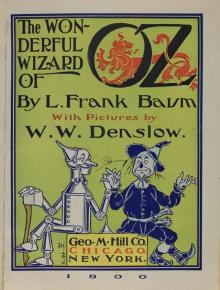 The Wonderful Wizard of Oz
The Wonderful Wizard of Oz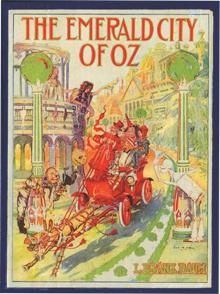 The Emerald City of Oz
The Emerald City of Oz The Story of Peter Pan, Retold from the fairy play by Sir James Barrie
The Story of Peter Pan, Retold from the fairy play by Sir James Barrie Sky Island
Sky Island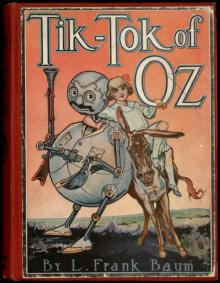 Tik-Tok of Oz
Tik-Tok of Oz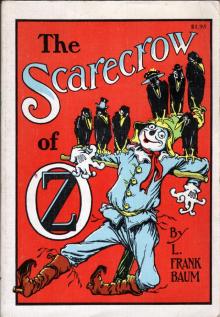 The Scarecrow of Oz
The Scarecrow of Oz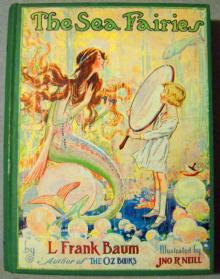 The Sea Fairies
The Sea Fairies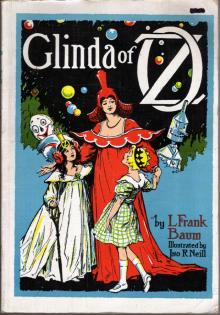 Glinda of Oz
Glinda of Oz The Lost Princess of Oz
The Lost Princess of Oz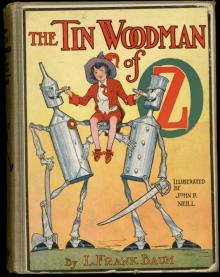 The Tin Woodman of Oz
The Tin Woodman of Oz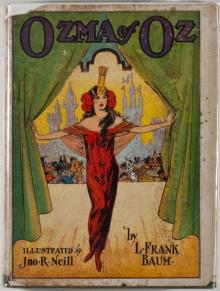 Ozma of Oz
Ozma of Oz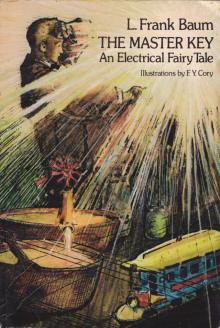 The Master Key
The Master Key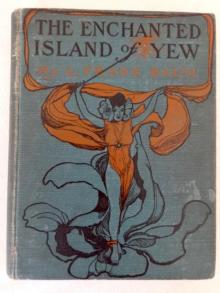 The Enchanted Island of Yew
The Enchanted Island of Yew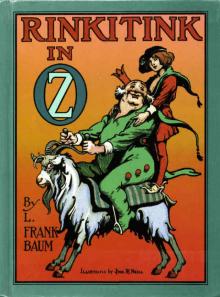 Rinkitink in Oz
Rinkitink in Oz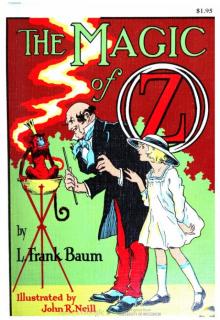 The Magic of Oz
The Magic of Oz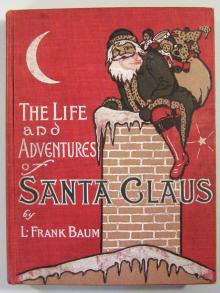 The Life and Adventures of Santa Claus
The Life and Adventures of Santa Claus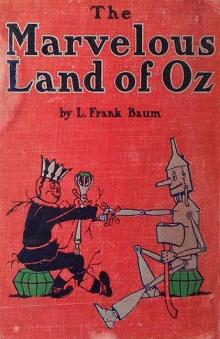 The Marvelous Land of Oz
The Marvelous Land of Oz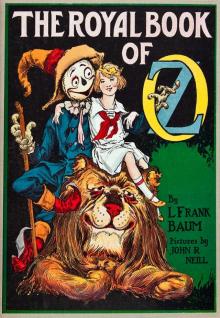 The Royal Book of Oz
The Royal Book of Oz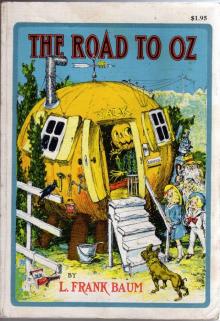 The Road to Oz
The Road to Oz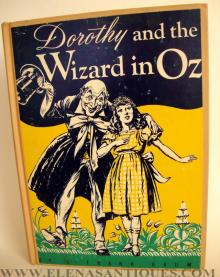 Dorothy and the Wizard in Oz
Dorothy and the Wizard in Oz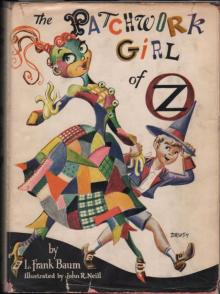 The Patchwork Girl of Oz
The Patchwork Girl of Oz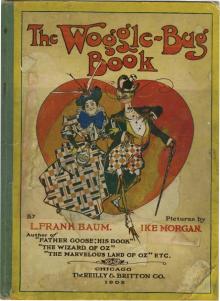 The Woggle-Bug Book
The Woggle-Bug Book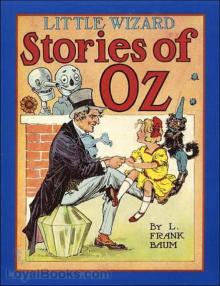 Little Wizard Stories of Oz
Little Wizard Stories of Oz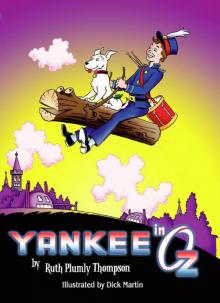 Yankee in Oz
Yankee in Oz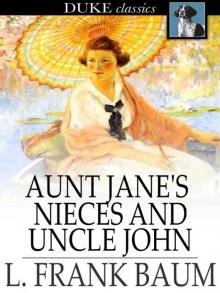 Aunt Jane's Nieces and Uncle John
Aunt Jane's Nieces and Uncle John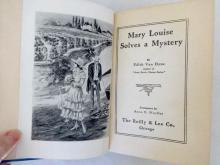 Mary Louise
Mary Louise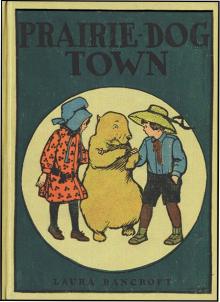 Prairie-Dog Town
Prairie-Dog Town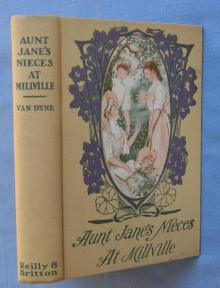 Aunt Jane's Nieces at Millville
Aunt Jane's Nieces at Millville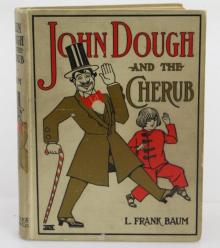 John Dough and the Cherub
John Dough and the Cherub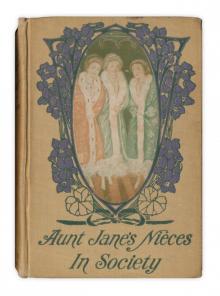 Aunt Jane's Nieces in Society
Aunt Jane's Nieces in Society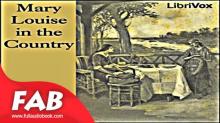 Mary Louise in the Country
Mary Louise in the Country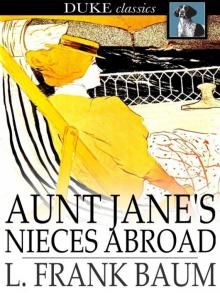 Aunt Jane's Nieces Abroad
Aunt Jane's Nieces Abroad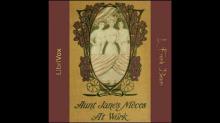 Aunt Jane's Nieces at Work
Aunt Jane's Nieces at Work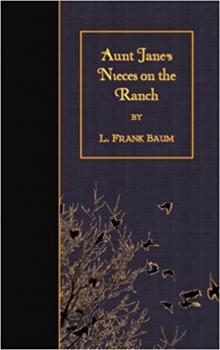 Aunt Jane's Nieces on the Ranch
Aunt Jane's Nieces on the Ranch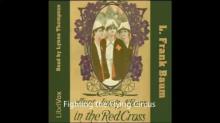 Aunt Jane's Nieces in the Red Cross
Aunt Jane's Nieces in the Red Cross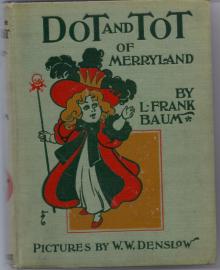 Dot and Tot of Merryland
Dot and Tot of Merryland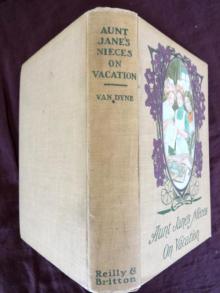 Aunt Jane's Nieces on Vacation
Aunt Jane's Nieces on Vacation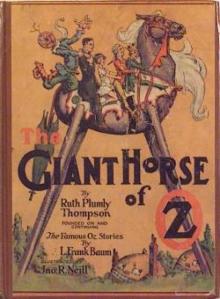 The Giant Horse Of Oz
The Giant Horse Of Oz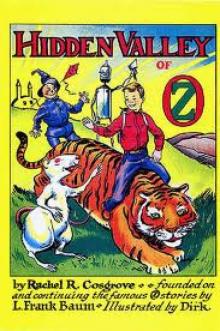 The Hidden Valley of Oz
The Hidden Valley of Oz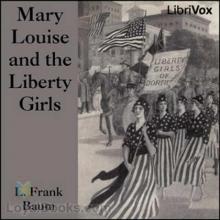 Mary Louise and the Liberty Girls
Mary Louise and the Liberty Girls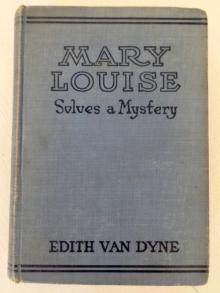 Mary Louise Solves a Mystery
Mary Louise Solves a Mystery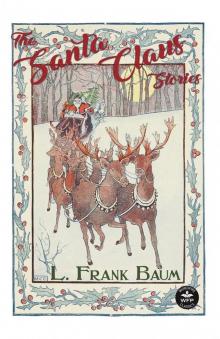 The Santa Claus Stories
The Santa Claus Stories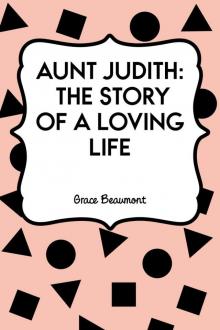 Aunt Judith: The Story of a Loving Life
Aunt Judith: The Story of a Loving Life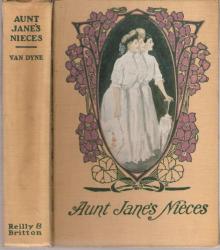 Aunt Jane's Nieces
Aunt Jane's Nieces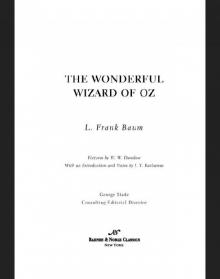 Wonderful Wizard of Oz (Barnes & Noble Classics Series)
Wonderful Wizard of Oz (Barnes & Noble Classics Series)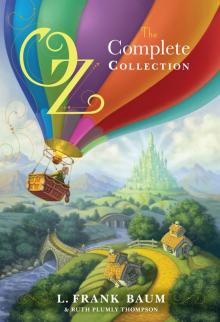 Oz, The Complete Collection
Oz, The Complete Collection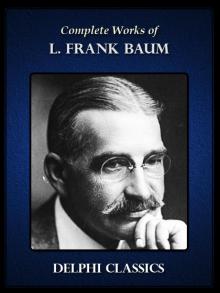 Complete Works of L. Frank Baum
Complete Works of L. Frank Baum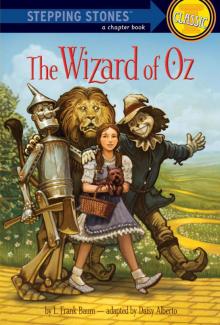 The Wizard of Oz
The Wizard of Oz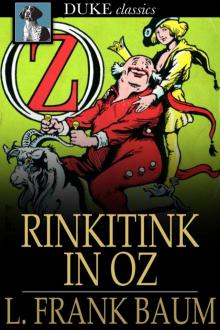 Oz 10 - Rinkitink in Oz
Oz 10 - Rinkitink in Oz